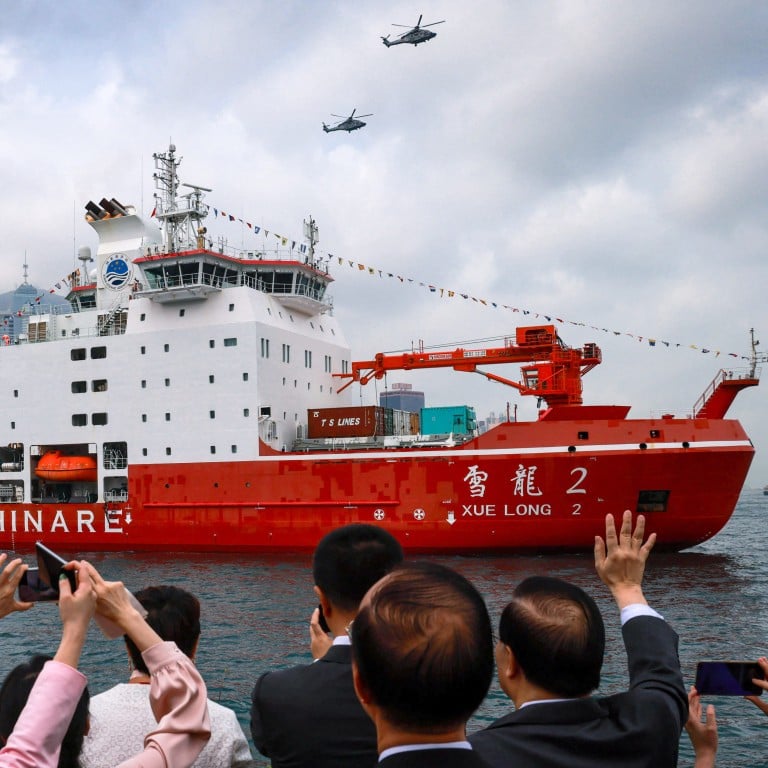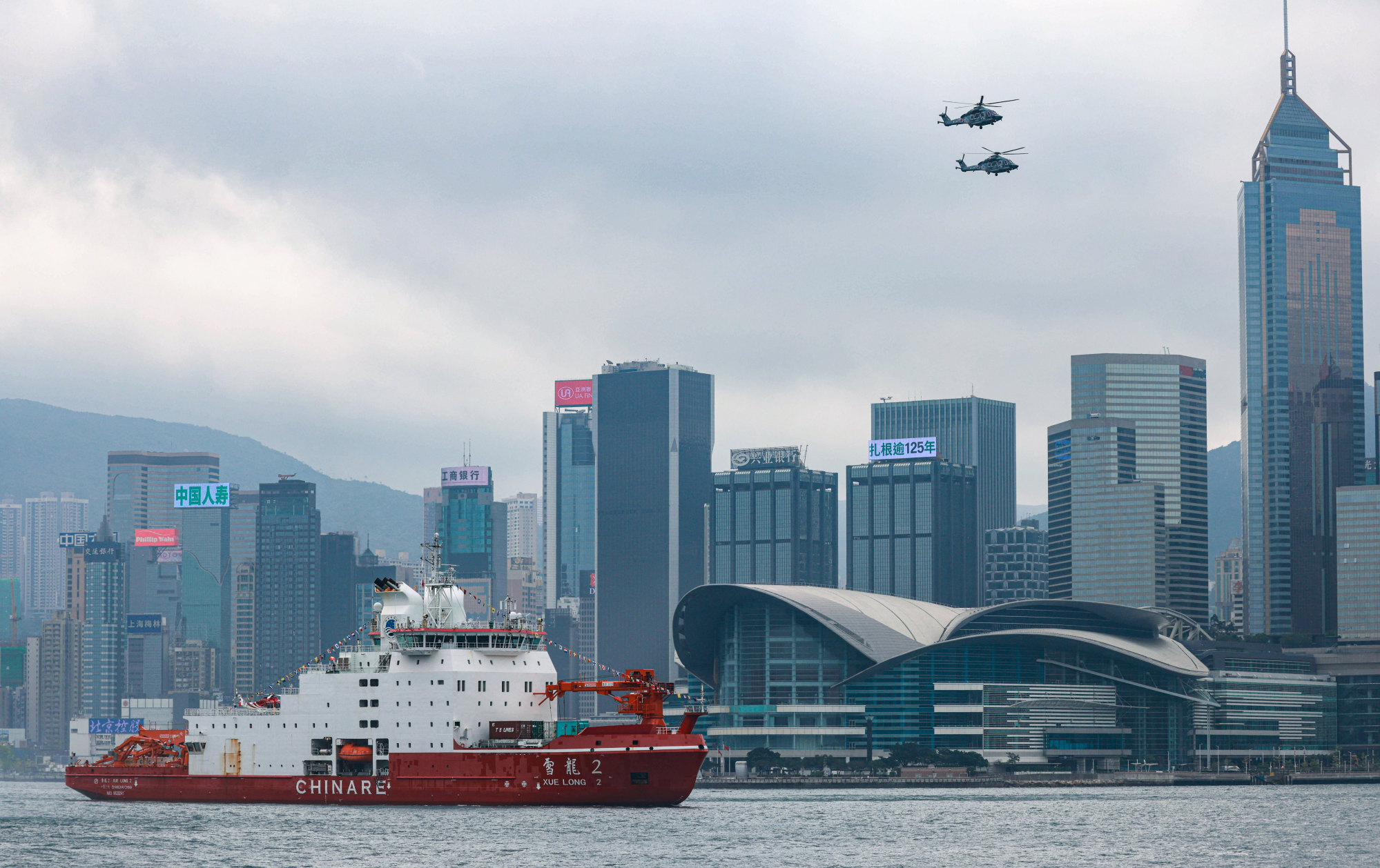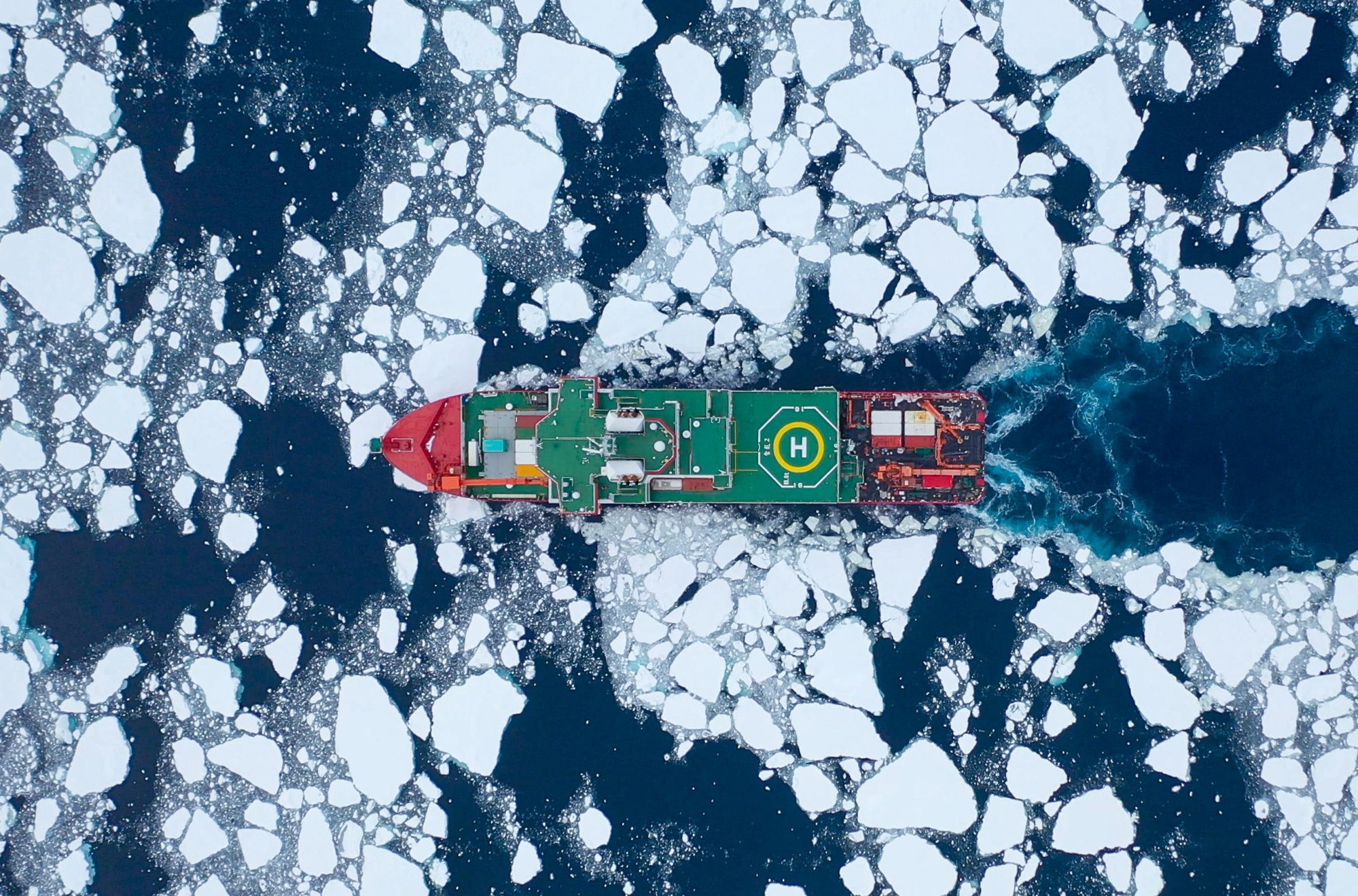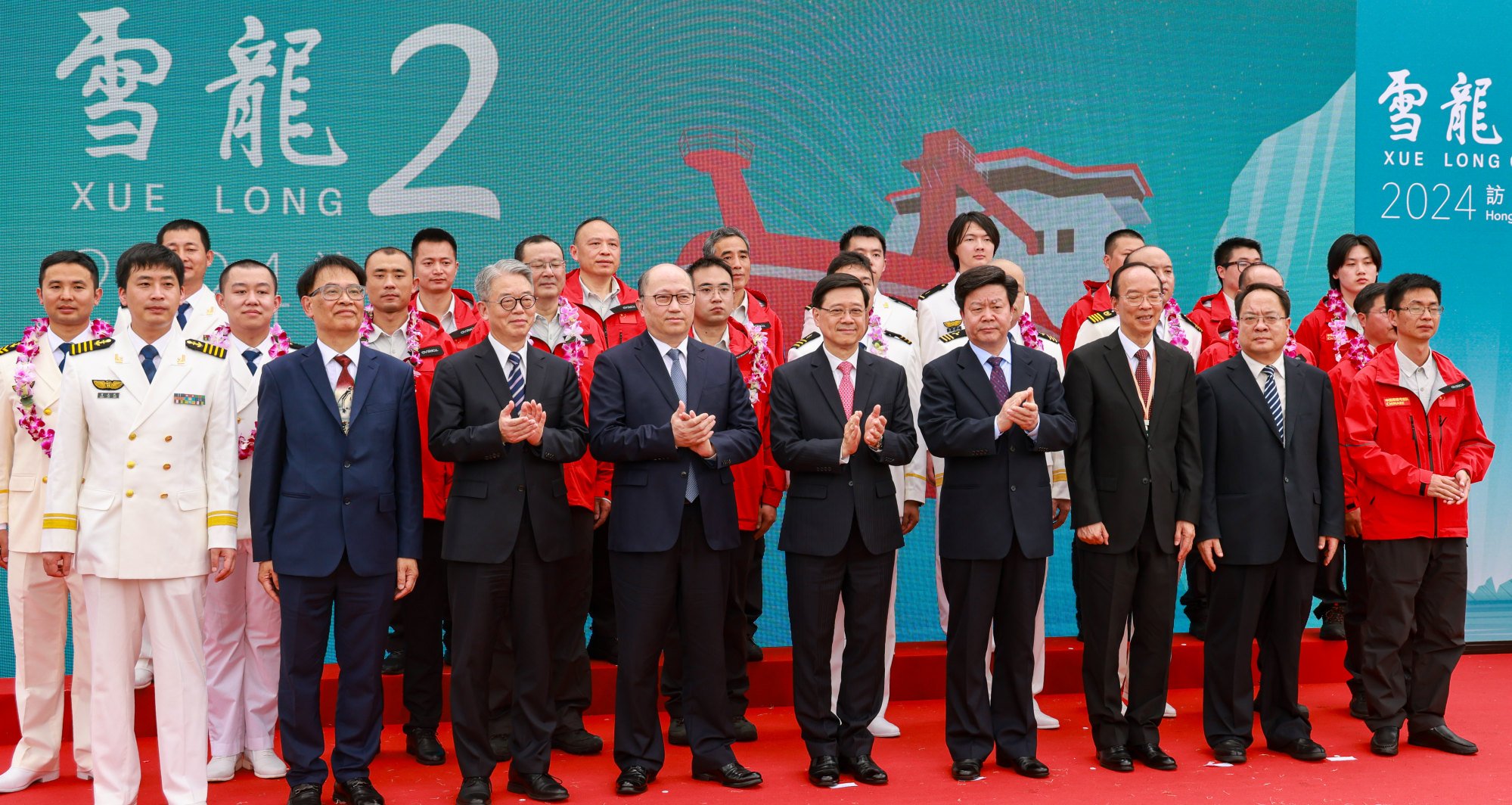
Chinese icebreaker Xue Long 2’s expedition team hopeful of Hong Kong role in future polar missions, as vessel arrives on 5-day visit
- Country’s first domestically built polar scientific research icebreaker gets warm welcome in Victoria Harbour
- City leader John Lee praises visit, vessel’s first to Chinese port after recent polar expedition, with related events and exhibitions set to showcase national achievements
Top officials, lawmakers and residents welcomed the ship on Monday morning as it docked in Tsim Sha Tsui for a five-day visit, its first stop at a Chinese port on its return journey from Antarctica.
Professor Ho Kin-chung, founder of visit organisers the Green Future Foundation Association and Polar Research Institute of Hong Kong, said mainland Chinese authorities had pledged to include Hongkongers in future expeditions.
“We had a relaxed exchange with visiting mainland officials who made a verbal promise that Hong Kong scientists would be able to participate in Xue Long 2’s future missions,” he said ahead of the welcoming ceremony.
Expedition deputy leader Wang Jinhui said he would welcome the contribution of Hong Kong scientists and businesses.
“I hope Hong Kong’s scientists will participate more in our work. We also welcome industry participation in support and protection work,” Wang said.

The 400-foot, 14,000-tonne Xue Long 2, or Snow Dragon 2, entered service in 2019 and is equipped with world-class marine and research facilities. It has the world’s first dual-directional icebreaking capability at the bow and stern, and can freely rotate 360 degrees in place.
The vessel will be open to the public until Friday, but places will be allocated through an online ballot because of limited on-board capacity.
The ship has a “moon pool”, a deep shaft that opens to the ocean through the hull from an opening on the floor. Although the moon pool will not be opened, visitors can gauge the scale of its work from sample collection tubes on show.
The equipment was used to collect seawater for scientists to understand the marine environment of the Amundsen Sea, part of the Southern Ocean in Antarctica.

A tailor-made drone will also be on show. During the expedition, the drone was used to survey the landscape for a safe docking location or pick up buoys that had been left out to collect environmental data.
Visitors can also check out plant and animal samples in the ship’s laboratory. These include a jar of Antarctic krill, a small shrimp-like crustacean, and a wiry branch of gorgonian, a deep-sea coral found in the southernmost area on Earth.
The ship’s bridge will also be open to the public. Visitors will be able to get a feel for the navigation process through sheet maps used by the expedition team. To ensure accuracy, officers first mark their route on a map before setting sail with the aid of electronic gear.
The icebreaker’s helipad is another tour highlight, with visitors getting a close-up of the “Snow Eagle 301” helicopter. Equipped with runners at its wheels, the helicopter was built for sturdy landings on ice and is used to transport scientists to research outposts.
Lawmaker Ma Fung-kwok, who chairs the organising committee for the visit and its associated events, said tickets for the first two days had all been snapped up.
Hong Kong to receive icebreaker Xue Long 2 for first time in April
Wei Fuhai, another deputy leader of the expedition team, said one of the major highlights of the tour would be the chance to see the moon pool, which helped the vessel access the ocean depths to collect samples and place equipment.
“This is the equivalent of having a device that reaches the bottom of the sea in the middle of our vessel,” Wei said.
As Xue Long 2 arrived in Tsim Sha Tsui, it was flanked by tug boats spraying water into the air with two government helicopters flying overhead. Nine vessels from the Environmental Protection Department and various disciplined services led the way.
Chief Executive John Lee Ka-chiu and Zheng Yanxiong, director of the central government’s liaison office in Hong Kong, welcomed the ship’s 30-strong delegation which included team leader Zhang Beichen, the chief scientist of China’s 40th Antarctic expedition, and Captain Xiao Zhimin.

The icebreaker’s visit coincides with a two-day conference on climate change organised by the Chinese University of Hong Kong. An exhibition on the topic and polar research at the Hong Kong Science Museum runs until June.
Students will be invited to hear from the ship’s visiting scientists as well as those from the Zhongshan Station in Antarctica, while lectures and exhibitions on polar science will be organised for primary and secondary school pupils starting next month.
Lee said the visit showed how much the central government valued the city.
“This trip also showcases Hong Kong’s metropolitan status, through Hong Kong’s international brand, to show the world our country’s organisation and leadership prowess in marine science research,” Lee said.
Ministry of Natural Resources deputy minister Sun Shuxian encouraged local scientists and companies to participate in national polar missions.
“The visit activities will foster widespread exchanges and cooperation between mainland and Hong Kong research institutions on polar research, increase public understanding of polar expeditions and raise interest among young people,” Sun said.
“We hope more scientists, residents and companies can support and participate in national polar expeditions.”
Expedition head Zhang thanked Hongkongers for their support. He said his team had successfully opened Qinling Station, the Polar Research Institute of China’s fifth Antarctic research outpost, and carried out other fieldwork during their mission.
The team will be treated to a banquet with cultural performances by primary and secondary school pupils on Monday night.


